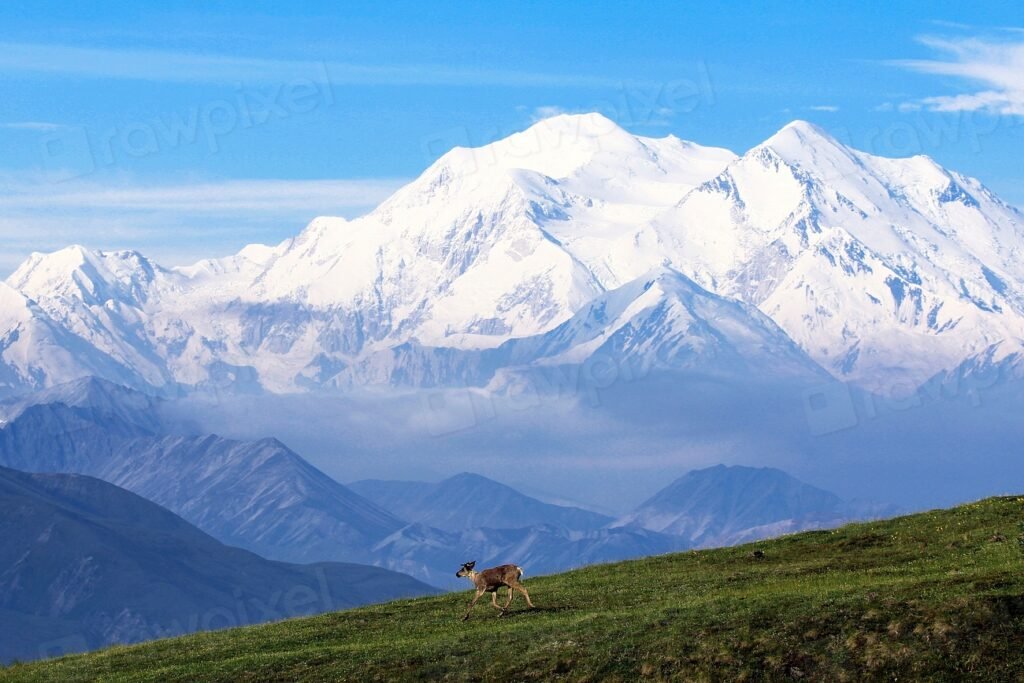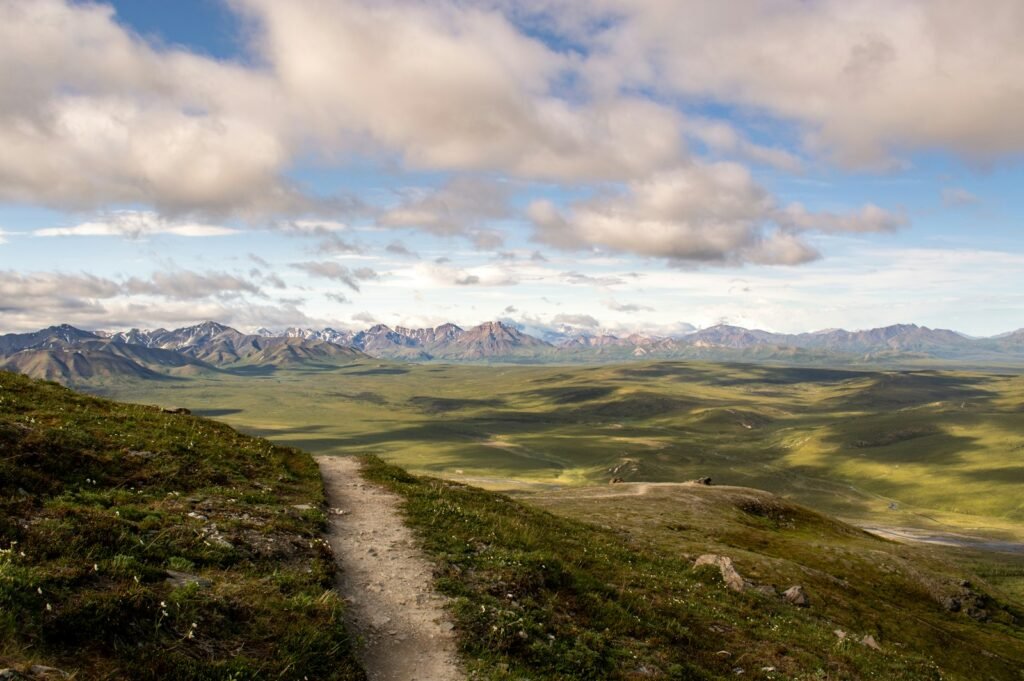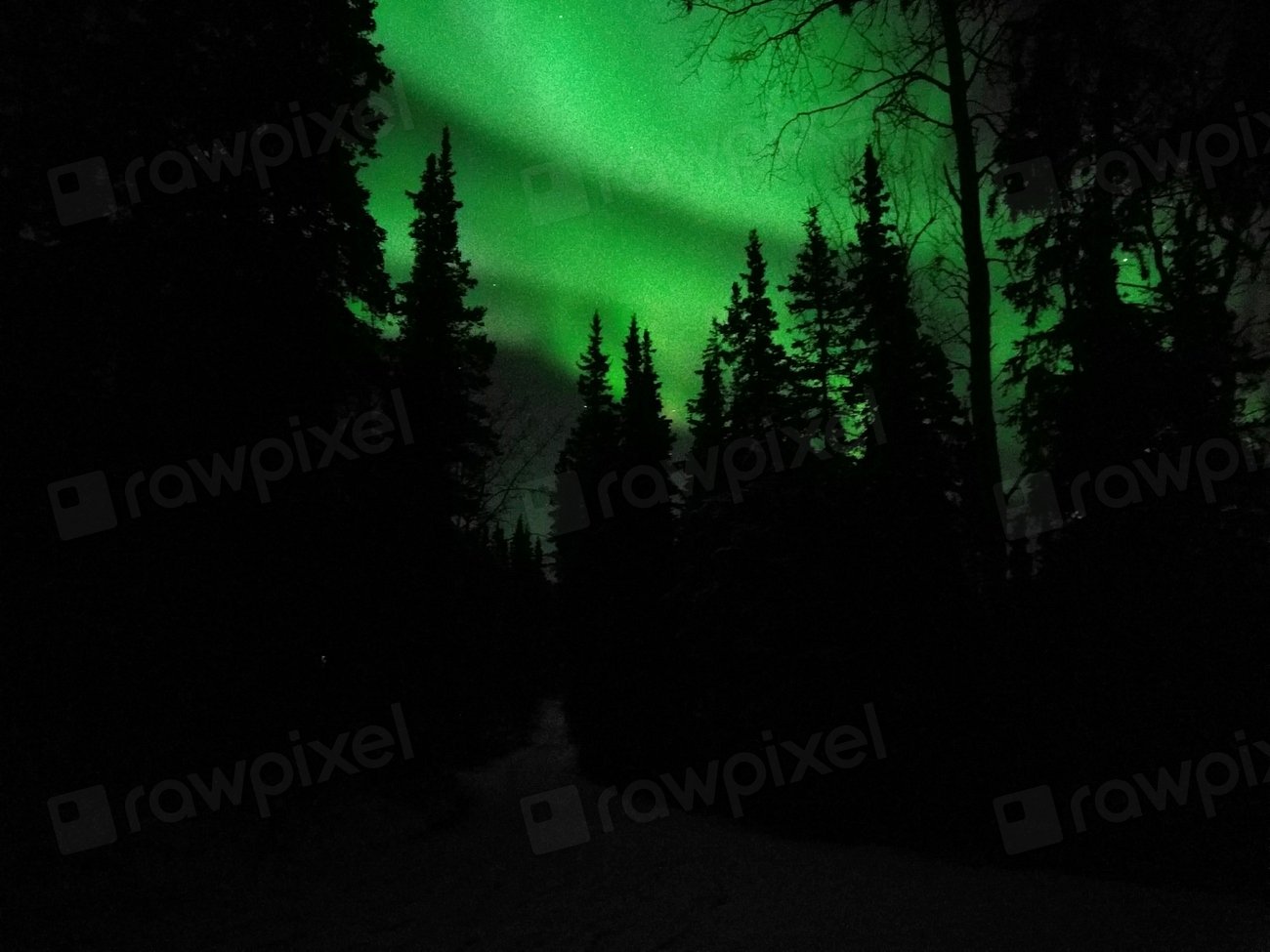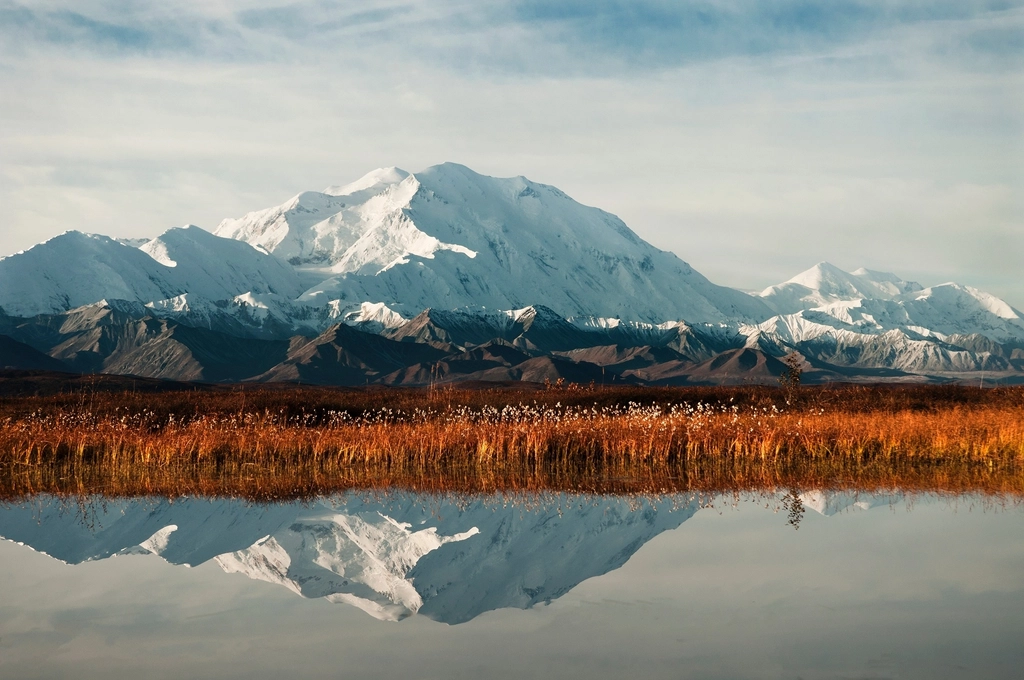Denali Summer Hiking
Denali National Park, a true Alaskan wilderness, offers an adventure unlike any other in America’s last frontier. Spanning millions of acres of untamed beauty, this magnificent park is home to “The Great One” – the tallest mountain in North America standing proudly at 20,310 feet. Visitors to Denali can experience remarkable wildlife viewing, breathtaking landscapes, and outdoor activities ranging from gentle nature walks to challenging backcountry treks throughout its six million acres of pristine wilderness.

The park provides something for everyone, regardless of physical ability or adventure preference. From guided bus tours that take travelers deep into the park’s heart to flightseeing experiences that showcase Denali’s majestic peaks from above, the options are endless. Wildlife enthusiasts might spot the “Big Five” – grizzly bears, wolves, moose, caribou, and Dall sheep – while photographers will find endless opportunities to capture Alaska’s stunning natural beauty.
Beyond hiking the numerous trails of varying difficulty, adventurers can experience rafting on glacial rivers, mountain biking, or simply relaxing at one of the visitor centers to learn about the park’s rich history and ecosystem. The park remains open year-round, though summer brings the fullest access when winter ice and snow retreat, revealing the true magnificence of this Alaskan treasure.
Planning Your Denali National Park Visit
Preparing for a trip to Denali National Park requires careful timing, transportation planning, and knowledge of available facilities and regulations. The park’s seasonal nature and remote location demand thoughtful preparation to ensure a rewarding wilderness experience.
Best Time to Visit Denali
Denali National Park is open year-round, but the summer season from late May to mid-September offers the most accessible experience. This period is the only time when the park’s bus services operate, making it easier to explore deeper into the wilderness.
June through August provides the warmest temperatures, with daytime highs typically between 50-70°F. These months also offer the best wildlife viewing opportunities as animals are active throughout the park.
Visitors should be prepared for extreme weather regardless of season. Conditions can change rapidly, with snow possible even in summer months. September brings beautiful fall colors but colder temperatures and fewer services.
May and September offer fewer crowds but reduced services and potentially challenging weather conditions. Winter visits (October-April) provide a completely different experience with limited access and services.

Getting There and Transportation
Most visitors reach Denali by traveling along the Parks Highway (Alaska Route 3), connecting Anchorage and Fairbanks. The park entrance is approximately 240 miles north of Anchorage and 125 miles south of Fairbanks.
The Alaska Railroad provides daily summer service to the park from both Anchorage and Fairbanks. This scenic journey eliminates driving concerns and delivers travelers directly to the park entrance.
Private vehicles can only access the first 15 miles of the 92-mile Park Road. To explore beyond this point, visitors must use the park’s bus system. Two main bus types serve the park:
- Tour buses: Narrated trips with designated stops
- Transit buses: Non-narrated, hop-on/hop-off service for hikers
Reservations for bus trips are highly recommended during peak season as they often sell out. Tickets can be purchased online through the park’s official concessionaire.
Denali Visitor Center and Park Facilities
The Denali Visitor Center serves as the main hub for park information and services. Located near the park entrance, it features exhibits on park wildlife, geology, and history. Rangers are available to answer questions and provide hiking recommendations.
Additional facilities near the visitor center include:
- Murie Science and Learning Center
- Wilderness Access Center (for bus tickets and backcountry permits)
- Riley Creek Mercantile (limited groceries and supplies)
- Restaurant and gift shop
Campgrounds are available throughout the park, ranging from Riley Creek near the entrance to more remote options accessible only by bus. Advance reservations are essential for campgrounds during summer months.
Cell service is limited to the park entrance area. Visitors planning to venture deeper into the park should make all necessary arrangements beforehand and not rely on mobile communications.
Park Rules, Permits, and Leave No Trace
Denali National Park has an entrance fee of $15 per person, which is covered by the America the Beautiful National Park Pass. This fee helps maintain park infrastructure and services.
Backcountry camping requires a permit obtained in person at the Backcountry Information Center. These permits are issued no more than one day before the start of a trip and include a mandatory safety orientation.
Leave No Trace principles are strictly enforced throughout the park:
- Pack out all trash
- Stay on established trails where they exist
- Maintain at least 300 yards distance from bears and 25 yards from all other wildlife
- Store food properly to avoid attracting wildlife
Fires are prohibited in the backcountry. Proper food storage is mandatory, with bear-resistant containers available for loan at the Backcountry Information Center.
Drones are not permitted anywhere in the park. Pets are allowed in limited areas but must remain leashed and cannot travel on buses beyond the 15-mile mark.
Hiking Experiences in Denali National Park

Denali National Park offers a diverse range of hiking opportunities across its vast wilderness, from clearly marked trails to untamed backcountry adventures. The park’s limited road access creates a unique environment where hikers can experience pristine nature and potentially spot wildlife in their natural habitat.
Top Hiking Trails in Denali
Denali features several well-maintained trails that cater to different skill levels. The Savage River Loop is a popular 2-mile flat trail that follows the river and offers excellent mountain views. This trail is ideal for beginners and families.
For more challenge, the Savage Alpine Trail provides a stunning 4-mile trek through alpine tundra with panoramic vistas. This trail connects the Savage River area to the Savage River Campground.
The Triple Lakes Trail stands as Denali’s longest marked trail at 9.5 miles, offering beautiful lake views and forest scenery. Hikers can spot wildlife and enjoy diverse ecosystems.
Other notable trails include:
- Horseshoe Lake Trail: A 2-mile loop featuring beaver dams and lake views
- McKinley River Bar Trail: Offers access to gravel river bars with mountain views
- Thorofare Ridge Trail: A steep climb rewarding hikers with panoramic vistas
Backcountry Hiking and Off-Trail Adventures
Denali truly distinguishes itself through its backcountry experiences. With only 35.5 miles of marked trails in a park roughly the size of Vermont, off-trail hiking represents the authentic Denali experience.
Backcountry hikers need to obtain permits from the Backcountry Information Center. The park is divided into units, each with visitor quotas to preserve the wilderness experience. Rangers provide necessary information about terrain, wildlife safety, and water crossing techniques.
Off-trail hiking requires solid navigation skills and proper preparation. Hikers must be comfortable with route-finding across varied terrain including tundra, forests, and river crossings. Many experienced hikers recommend trekking poles for stability.
The freedom to chart your own course offers unparalleled opportunities to discover hidden valleys, untouched alpine meadows, and secluded viewpoints far from other visitors. Overnight backcountry trips require proper bear-resistant food storage and leave-no-trace camping practices.
Guided Hiking and Safety Tips
Guided hikes provide an excellent introduction to Denali’s wilderness. The Rock Creek Trail guided experience begins at 6:30 pm at the trailhead in the park, offering expert insights into the ecosystem.
Several approved guide companies operate in Denali, offering experiences ranging from easy nature walks to challenging day hikes. These guides enhance the experience with their knowledge of local flora, fauna, and geological features.
Safety in Denali requires preparation:
- Wildlife awareness: Know proper behavior for bear and moose encounters
- Weather preparedness: Dress in layers; weather changes rapidly
- Navigation tools: Carry maps, compass, and potentially GPS
- Communication: Cell service is extremely limited; consider satellite devices
- First aid: Carry a comprehensive kit and know how to use it
The Nenana River Trail offers a guided 3.5-mile round-trip hike that typically takes 3-4 hours and is rated as easy, perfect for beginners seeking guidance.
Ecology, Scenery, and Wilderness Exploration
Denali’s hiking trails traverse diverse ecosystems, from lowland taiga forests to alpine tundra. Each environment hosts unique plant and animal communities adapted to harsh subarctic conditions.
The park’s biodiversity becomes apparent as hikers move through elevation changes. Lower elevations feature spruce forests and willow thickets, while higher elevations reveal colorful tundra plants that complete their life cycles during brief summer months.
Wildlife viewing opportunities abound while hiking. Visitors might encounter caribou, Dall sheep, moose, wolves, and possibly bears. Smaller mammals like Arctic ground squirrels and pikas are commonly seen in rocky areas.
The landscapes encountered while hiking in Denali range from dramatic river valleys to high mountain passes. Many trails offer views of the Alaska Range, including Denali itself when weather permits. Denali’s vertical relief stands at an impressive 18,000 feet from base to peak, creating dramatic backdrops for hikers exploring the park’s wilderness.
Top Things to Do in Denali National Park

Denali National Park offers visitors a range of unforgettable experiences, from scenic bus tours that showcase wildlife and mountain vistas to thrilling outdoor adventures in Alaska’s pristine wilderness.
Guided Bus Tours and Narrated Experiences
The Denali Park Road provides the main access into the heart of the park, with guided bus tours being the primary way visitors explore beyond Mile 43. The Tundra Wilderness Tour is one of the most popular options, offering comprehensive narration about the park’s ecosystem and history.
These narrated tour buses stop frequently for wildlife viewing and scenic photo opportunities. Visitors often spot Alaska’s “Big 5” – moose, caribou, Dall sheep, wolves, and grizzly bears – along the journey.
Tours vary in length from 4-8 hours, with some traveling deeper into the park than others. The green transit buses offer a more flexible option for those who want to hop on and off at designated points for hiking.
Advance reservations are highly recommended, especially during peak summer months when tours frequently sell out.
Flightseeing and Helicopter Tours
For a truly spectacular perspective, flightseeing tours provide breathtaking aerial views of Denali’s dramatic landscapes. Fixed-wing aircraft cover more territory, allowing visitors to see vast stretches of the Alaska Range and surrounding wilderness.
Helicopter tours offer a more intimate experience with the option to land on alpine tundra or glaciers for short guided walks. These landings provide unique opportunities to experience remote areas of the park that are otherwise inaccessible.
Most flights circle North America’s tallest peak (when weather permits) and showcase stunning glacier formations. Tours typically last 1-3 hours depending on the package.
The best flightseeing conditions generally occur in the morning when winds are calmer. Companies operate from both Talkeetna (south of the park) and from airstrips near the park entrance.
Adventure Activities: Rafting, Ziplining, and Biking
The Nenana River bordering the park offers excellent white water rafting adventures with both mild float trips and more challenging rapids for thrill-seekers. Professional guides ensure safety while providing information about the area’s geology and wildlife.
Zipline tours near the park entrance provide an adrenaline rush with stunning views of the surrounding forest and mountains. Most courses include multiple lines of varying heights and speeds.
For those who prefer land-based exploration, biking is permitted on park roads, offering a more independent way to experience Denali’s landscapes. Bike rentals are available near the park entrance.
ATV tours and packrafting adventures present additional options for experiencing Alaska’s backcountry. These guided excursions take visitors to areas less traveled while maintaining environmental sensitivity.
Denali Sled Dog Kennels and Dog Sledding
The Denali Sled Dogs are working canines that help rangers patrol the park’s vast wilderness during winter months. The kennels are open to visitors in summer with free demonstrations showing how these Alaskan huskies work as a team.
Rangers provide fascinating presentations about the history and importance of dog sledding in Alaska. Visitors can meet the dogs and learn about their training, care, and the special bond they share with their handlers.
During winter, several outfitters offer authentic dog sledding experiences for visitors who want to try mushing themselves. These tours range from short rides to multi-hour adventures through snow-covered landscapes.
The kennel is accessible via the free park shuttle bus, making it one of the most convenient and family-friendly activities in Denali. The demonstrations occur several times daily during the summer season.
Wildlife and Natural Beauty
Denali National Park offers some of the most spectacular natural landscapes and wildlife viewing opportunities in North America. The park’s diverse ecosystems support a rich variety of animals against a backdrop of dramatic mountains, glaciers, and pristine lakes.
Wildlife Viewing and Photography
Denali is home to an impressive array of wildlife, making it a paradise for nature enthusiasts and photographers. The “Big Five” mammals that visitors hope to spot include grizzly bears, wolves, Dall sheep, moose, and caribou.
The best wildlife viewing opportunities occur along the Park Road, particularly beyond Mile 30 where human development diminishes. Many animals are most active during early morning or evening hours, so plan accordingly for optimal sightings.
When photographing wildlife, bring a telephoto lens (at least 300mm) to capture animals safely from a distance. Remember to maintain a minimum of 300 feet from bears and wolves, and 25 feet from other wildlife.
Denali is bear country, so always stay alert, make noise while hiking, and carry bear spray as a precaution.
Geology, Glaciers, and Scenic Landscapes
Denali’s geological features tell a story spanning millions of years. The park showcases dramatic evidence of tectonic activity, with the ongoing collision of the Pacific and North American plates continuing to push the Alaska Range upward.
Numerous glaciers carve through the landscape, including the massive Ruth Glacier which is over 3,800 feet deep in some places. The Muldrow Glacier stretches nearly 32 miles, making it one of the longest glaciers in the park.
Colorful alpine tundra creates a stunning mosaic across the landscape, especially vibrant during late summer and early fall. This fragile ecosystem hosts miniature plants adapted to the harsh climate, creating a delicate carpet of vegetation.
The park’s varied terrain transitions from lowland taiga forests to alpine tundra, creating distinct ecological zones that support different plant and animal communities.
Wonder Lake and Scenic Lakes
Wonder Lake stands as the crown jewel among Denali’s lakes, located at Mile 85 on the Park Road. On clear days, this pristine lake perfectly reflects Denali mountain, creating one of the park’s most iconic photo opportunities.
The best time to capture Wonder Lake’s mirror-like reflections is early morning when winds are typically calmer. Photographers often arrive before sunrise to set up for the perfect shot.
Several other scenic lakes dot the park landscape, including Reflection Pond and Horseshoe Lake. The 1.5-mile Horseshoe Lake Trail offers an easy hike with excellent views and potential beaver sightings.
Most lakes remain frozen until late May or early June, with peak beauty occurring from mid-June through September when wildflowers bloom along the shorelines and wildlife frequent the water sources.
Stunning Views of the Alaska Range and Denali Mountain
The Alaska Range forms the dramatic backbone of the park, with Denali (formerly Mt. McKinley) standing as its centerpiece. At 20,310 feet, Denali is the tallest mountain in North America and creates its own weather systems.
The mountain is notoriously shy, with complete views available only about 30% of the time due to cloud cover. Your best chance to see Denali in its entirety comes during early morning hours or in September when skies tend to be clearer.
Several viewpoints offer spectacular perspectives of the mountain:
- Stony Hill Overlook (Mile 62)
- Eielson Visitor Center (Mile 66)
- Wonder Lake area (Mile 85)
For those seeking aerial views, flightseeing tours provide unforgettable perspectives of the mountain’s massive scale and the surrounding glaciers. These tours operate from Talkeetna and the park entrance area, weather permitting.
Camping and Backcountry Exploration
Denali offers diverse camping experiences from established campgrounds to remote wilderness adventures. Visitors can enjoy both front-country convenience and challenging backcountry exploration in this vast, pristine landscape.
Campgrounds and Camping in Denali
Denali National Park features six established campgrounds along the 92-mile park road, each with its own unique character. Riley Creek Campground near the park entrance remains open year-round and is free from mid-September to mid-May, making it ideal for shoulder season visits.
Savage River (mile 13), Sanctuary (mile 22), Teklanika (mile 29), Igloo Creek (mile 35), and Wonder Lake (mile 85) offer progressively more remote experiences. Wonder Lake provides stunning views of Denali on clear days.
Most campgrounds require reservations, especially during peak summer months (June-August). Facilities vary by location, with Riley Creek offering the most amenities including flush toilets and a camp store.
Bear-proof food storage is mandatory at all sites. Campers should prepare for variable weather conditions, as temperatures can fluctuate dramatically even in summer.
Backcountry Permits and Planning
Denali’s backcountry is divided into 87 units, each covering thousands of acres. Unlike most national parks, Denali features very few established trails, offering a true wilderness experience.
Backcountry permits are required for overnight stays and are issued in person only, no more than one day before your trip begins. The permit system limits the number of campers in each unit, preserving the wilderness experience.
Rangers provide mandatory safety briefings before issuing permits, covering wildlife encounters, river crossings, and navigation. They can help select appropriate units based on experience level and conditions.
When planning, consider:
- Physical fitness and wilderness experience
- Topographic maps and route planning
- Wildlife safety equipment
- Weather preparedness
- River crossing techniques
Most backcountry access requires using the park’s shuttle bus system, which drops hikers at requested points along the park road.
Leave No Trace and Conservation
Denali National Park emphasizes strict adherence to Leave No Trace principles to protect its fragile ecosystem. These principles are essential for preserving the wilderness for future generations.
Key practices include:
- Pack out all trash and waste
- Use camp stoves instead of fires
- Camp on durable surfaces like gravel bars
- Keep 100 yards from wildlife
- Store food properly to avoid attracting bears
The park’s conservation efforts focus on maintaining natural wildlife behavior and protecting delicate tundra vegetation, which can take decades to recover from damage.
Visitors should stay on established paths near the entrance area and spread out in the backcountry to avoid creating social trails. Proper human waste disposal is critical—pack out toilet paper and bury waste at least 200 feet from water sources.
Essential Tips for Wilderness Camping
Backpacking in Denali presents unique challenges compared to other national parks. Weather changes rapidly, with summer conditions ranging from hot sunshine to snow.
Essential gear includes:
- Bear-resistant food container (provided with permit)
- Rain gear (even in summer)
- Insect protection (mosquitoes peak in June-July)
- Water purification system
- Proper footwear for varied terrain
Navigation skills are crucial as GPS may be unreliable. Hikers should be comfortable using topographic maps and compass.
River crossings present significant hazards—water levels change daily and glacial streams are dangerously cold. Many experienced backpackers use trekking poles and river crossing shoes.
Consider carrying a satellite communication device as there is no cell service beyond the park entrance. Traveling with a partner or group is strongly recommended for safety.
Nearby Destinations and Cultural Heritage
Denali National Park is surrounded by vibrant communities and rich heritage sites that enhance any visitor experience. The area offers opportunities to explore local towns, learn about indigenous history, and gain deeper insights into the park’s natural wonders.
Talkeetna and Other Gateway Communities
Talkeetna serves as a charming gateway to Denali, located about 150 miles south of the park entrance. This historic village offers a unique blend of outdoor adventure and small-town hospitality.
Visitors can enjoy:
- Mountain views: One of the best vantage points to see Denali on clear days
- Local cuisine: Try fresh-caught salmon and craft beers at local restaurants
- Flight tours: Book flightseeing trips that circle the mountain
Other notable gateway communities include Healy, just 12 miles north of the park entrance, offering additional lodging options and dining experiences. Cantwell, on the southern border, provides access to less-traveled areas of the park.
Each community features distinctive gift shops with authentic Alaskan crafts and artwork. During summer months, these towns host various festivals celebrating local culture and wilderness heritage.
Cultural History of Denali
The Denali region has been home to Alaska Native peoples for thousands of years, with the Koyukon Athabascans maintaining the deepest historical connections to the area.
The Athabascans named the mountain “Denali,” meaning “the high one” or “the great one,” long before European settlers arrived. This indigenous name was officially restored in 2015, replacing Mount McKinley.
Traditional subsistence practices shaped human interaction with this landscape for generations. Hunting, fishing, and gathering remained essential to survival in this challenging environment.
Visitors can learn about these cultural connections through:
- Interpretive displays at the Denali Visitor Center
- Ranger-led programs focusing on indigenous knowledge
- Cultural demonstrations during summer months
Historical mining activities also influenced the area, with the Kantishna Mining District established in the early 1900s. Some historic cabins and mining equipment can still be seen along certain park trails.
Eielson Visitor Center and Educational Opportunities
The Eielson Visitor Center, located at mile 66 of the Park Road, offers exceptional educational experiences and stunning views of Denali’s north face.
This facility features:
- Interactive exhibits explaining park geology and ecosystems
- Large windows framing spectacular mountain views
- Art gallery showcasing works inspired by the park
- Ranger-led talks throughout the day
The center stands at 3,200 feet elevation, providing a dramatic perspective of the Alaska Range. On clear days, visitors can see Denali rising nearly 18,000 feet from their viewing point.
Educational programs cover topics including wildlife biology, glaciology, and climate change impacts on the park ecosystem. Junior Ranger activities engage younger visitors through hands-on learning experiences.
The visitor center makes an excellent rest stop during the long park bus journey. Most park tours allow 30-45 minutes to explore the facility and surrounding area, where short hiking trails offer additional viewpoints.


